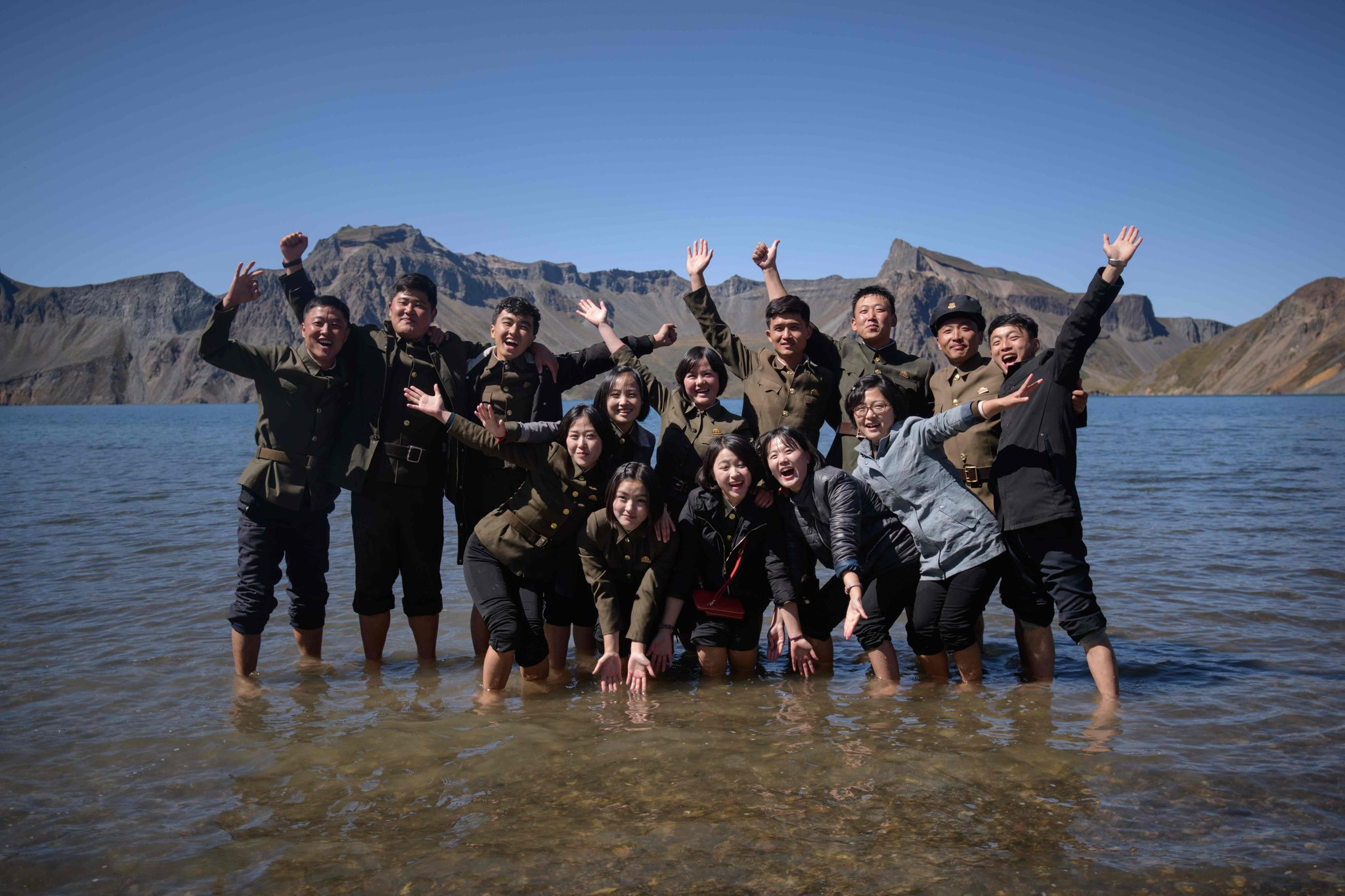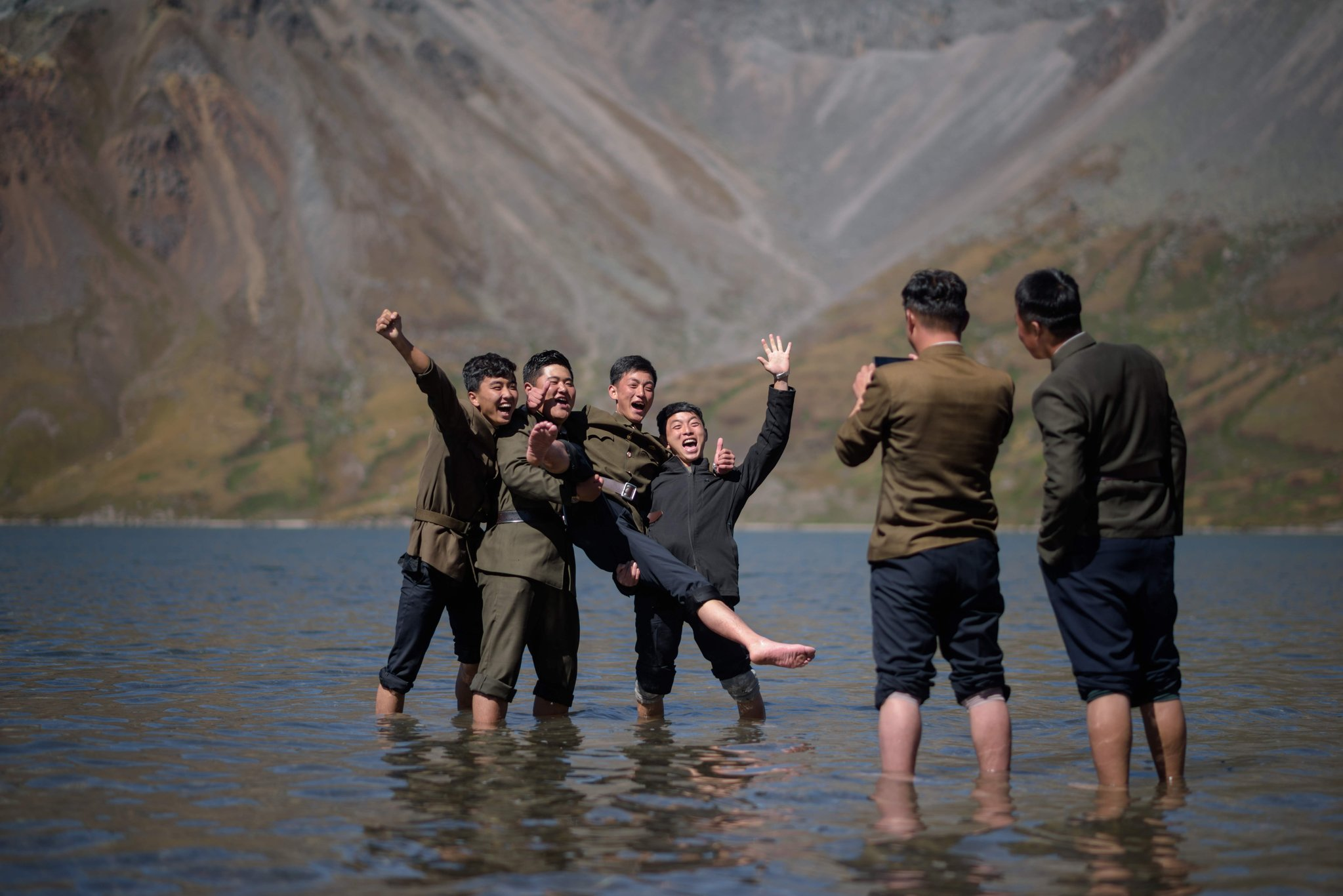I read some of this article today, it is looking at a policy speech and going over the economic development and future outlook for DPRK. This website writes from a south Korean perspective with a fairly positive view of DPRK (it's illegal to praise DPRK).
They compare DPRK's expected growth rate of 7% to OECD countries and found that only Ireland is higher than DPRK, and that DPRK's growth is higher than China's.
Ireland 9.94%
Turkiye (Turkey) 5.24%
Estonia 4.12%
Israel 3.85%
Poland 3.84%
For reference, Korea is 2.44%, the US is 1.98%, Japan is -0.20%, China is 6.74%, India is 4.00%, and the global average is 2.42%.
In this comparison, if North Korea's goals are realized, North Korea can be said to be the country with the fastest economic growth except Ireland. In particular, it is noteworthy that the level is higher than that of China, which leads the world economy with its high economic growth rate.
The article also mentions that Ireland's high growth rate can be attributed to foreign capital investment, and the article notes that when countries invite foreign capital in, they tend to get looted, and so DPRK is trying to grow without doing this. They also mention that DPRK's growth would likely be more rapid if sanctions were removed.
The article also looks at what sectors DPRK is developing, and compared DPRK and ROK's economic sectors, as well as the U.S.
Looking at the industrial structure [of the United States] as of 2020, the manufacturing sector accounted for 11.2%, while the service sector accounted for a whopping 80.1%. The country's economy is immersed in the service industry. This deformed economic structure is the root cause of today's economic crisis in the United States.
Later in the article, they talk about the policy of pursuing balanced regional development, and mention how it is often said that only people in Pyongyang have a high quality of life. The article grants that it's hard not to notice the development of Pyongyang which has grown to be a bustling city. However, the article points out the promotion of regional and rural development is being emphasized.
In his address to the city administration, Chairman Kim Jong-un said, “We should open up a new era in which regions change and develop on their own by promoting local industries across the country.” The idea is that local industries should be established so that the provinces can develop on their own without central support.
In addition, Chairman Kim Jong-un said, “We need to strongly push forward the business of modernizing local industrial factories in Kimhwa-gun and expanding the practical experience of ensuring demand within the military with its own raw material source to cities and counties across the country.”
North Korea has set Kimhwa-gun as a model for regional industrial development this year. The goal is to produce consumer goods necessary for the region in a factory that has realized modernization and automation using raw materials from their own region.
On rural development:
North Korea also has the idea of developing Samjiyon City to make rural areas across the country like Samjiyon. Large-scale greenhouse farms such as Jungpyeong Namsae (vegetables) Greenhouse Farm and Ryeonpo Greenhouse Farm are also being developed one after another. Thousands of apartment complexes were built in the Geomdeok district as an example of mountain villages and Gwangsan villages.
The article compares DPRK's program of regional and rural development to south Korea's, where an imbalance between the capital and the regional areas also exists, and points out that although many approaches have been tried to improve the balance of development in the south, the concentration in the cities is still getting worse, and so it will be worthwhile to keep an eye on DPRK's plans and developments in this regard.
The article then moves on to the topic of wealth inequality:
North Korea has a policy that aims to distribute the results of economic development evenly to the entire nation.
The article points out that wealth disparity is a chronic issue in capitalist countries, and adds that south Korea's situation is further complicated by the presence of foreign capital:
In South Korea, unlike other capitalist countries, the issue of foreign capital is added. Since a lot of foreign capital is coming into Korea, foreign capital takes a large part of the profits, and the domestic chaebols take a lot of the rest, so very little goes back to the common people. So, as of 2021, Korea's gross domestic product is ranked 10th in the world, but few people feel that they are living well economically.
The article then mentions that while some socialist countries have used the tactic of reform and opening up to increase their economic growth, it has resulted in some wealth inequalities in their countries, then notes that it seems that DPRK's policies aim to avoid that outcome in their own development strategies.
If you see inaccuracies in my summary compared to what the article says, please let me know.


Remember there is c/documentaries! You might find something good there too.
Taken for a Ride - The U.S. History of the Assault on Public Transport in the Last Century - This documentary takes a look at the old public transport system of Los Angeles and follows the step-by-step process by which it was dismantled by General Motors. IMO it's a good one for seeing a concrete example of the actual steps that privatization can take -- GM bought the streetcars after a campaign calling them inefficient/run down etc., then after buying them, let them degrade in quality and service, then replaced them with a supposedly superior bus system. Then they allowed the buses to give poor service, ultimately promoting individual cars over buses and highway expansions as the solution to traffic congestion.
Former CIA Agent John Stockwell Talks about How the CIA Worked in Vietnam and Elsewhere - This interview clip is only 15 minutes long but gives a very concise and specific example of how the CIA manipulates the media by having contacts with reporters and passing them a mixture of true and false stories, basically coming up with bullshit and fake photos that will go viral and spread CIA talking points while the "source" of the information becomes more and more obscured as the story is passed around different news agencies, as well as how the CIA have funded the production of countless books, whose authors were allowed to write whatever they wished as long as they included this or that specific point, and that these authors have gone on to have solid and respected careers in academia.
Cybersocialism: Project Cybersyn & The CIA Coup in Chile - From what I recall it gives a good overview of what happened in Chile. In my opinion, due to Chile's case being so well-documented, it's a case which people without a lot of background knowledge can start to learn about the process of CIA coups from and how it relates to protecting the interests of the bourgeoisie. A viewer of this documentary can then start applying that knowledge to many other cases where a similar pattern comes up (country tries to nationalize industries/resources which are in foreign imperialist hands => economic loan denial/asset freezes/sanctions are implemented by the imperialists & opposition groups and terrorists in the country are funded & coups are orchestrated by the imperialist power.)
The Human Face of Russia - Simply, lots of footage of everyday life in 1980s USSR. As I recall, it was a foreign group going there to film and fact-check about the living standards and learn about various political and social activities of the people. IIRC it was a pretty calm and positive documentary, a good one if you need some time away from more heavy and upsetting topics.
The Weight of Chains - About the breakup of Yugoslavia.
The U.S. School That Trains Dictators & Death Squads - About the School of the Americas.
Gaza Fights For Freedom - About the Great March of Return.
The Lobby - Four-part undercover investigation into Israel's covert influence campaign in the United States.